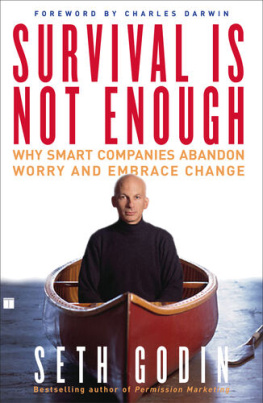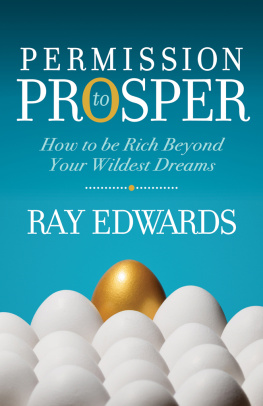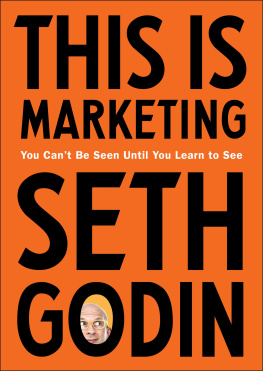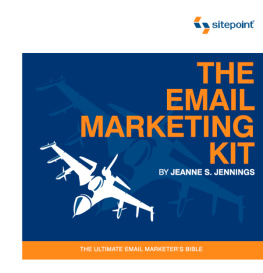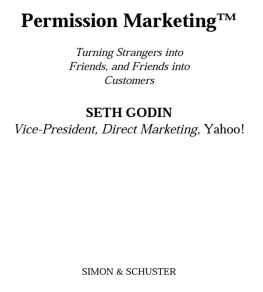ALSO BY SETH GODIN
The Information Please Business Almanac
The Guerrilla Marketing Handbook (with Jay Levinson)
eMarketing
For a list of other books on direct marketing, and a free subscription to the sporadically published and electronic Permission Marketing newsletter, send a blank e-mail to:
Seth@permission.com
This book is dedicated to Jerry Shereshewsky, visionary, apostle to the uninformed, brave marketer. Yoyodyne wouldnt have developed without him, and this book wouldnt have been written without his insights and agita.
CONTENTS
Foreword
By Don Peppers
coauthor, The One to One Future
founder, marketing 1:1, inc.
I predict that businesses all over the world will soon be familiar with most of the concepts outlined in this book. Sales and marketing people everywhere will soon be talking about the very commonsense principles of Permission Marketing and how best to put these principles to work for their own businesses.
To prove the accuracy of my prediction, Ill ask you to consider your own hectic life. The truth is, your whole problem comes down to a question of time and energy, doesnt it? Technically, life is easier for you than it was for your parents, because so much of the drudge work is now done by machines. But for some reason youre busier than ever, isnt that right? And doesnt it seem as though every day you get still busier?
How can this be? Simple. Because there are so many more claims on your attention, thats why. Youre already overloaded with an embarrassment of opportunities to absorb your time and expend your funds doing things, watching things, using things. But every day even more opportunities are presented to you. So now when you decide to spend an hour surfing the Web, the first thing researchers want to know is: Hey, where did that extra hour come from, anyway?
It came out of your life, thats where. You made a tough choice. Decided to use an irreplaceable hour of your life cruising the Net rather than watching one of the 115 channels on the tube, or answering one of the 25 e-mail messages stacked in your queue, or driving out for a snack at one of the 30 fast-food restaurants located within a few miles of your home, or sunning at the pool, or playing Scrabble with your teenage daughter.
Face it: Your attentionthe time you have available to pay attentionis an increasingly scarce resource. And, in any free economy, when resources become scarcer they command higher prices.
Now, to some of us this might appear to be a simple statement of economic principle. To Seth Godin, its also a business opportunity.
The basic idea of Permission Marketing is very simple: Each of us is born with only a certain amount of time on this earth, and figuring out how to use it wisely is one of lifes primary activities. Paying attention to somethinganythingis, in fact, a conscious act, requiring conscious effort. So one way to sell a consumer something in the future is simply to get his or her permission in advance. Youll do this by engaging the consumer in a dialoguean interactive relationship, with both you and the customer participating. Rather than simply interrupting a television show with a commercial or barging into the consumers life with an unannounced phone call or letter, tomorrows marketer will first try to gain the consumers consent to participate in the selling process. Perhaps the consumer will give his permission because he is volunteering to learn more about a particular product or class of products. Or perhaps youll actually offer some type of payment or benefit in return for the consumers permission.
In a noninteractive world this would be the kind of crazy, totally impractical idea that you might be tempted to chalk up to the idle musings of an overimaginative marketing geek. But the age of interactivity has actually arrived. It came suddenly, while no one was looking, and interactivity changed the rules.
The technology of interactivity has two quite different implications for businesses. On the one hand, because consumers can gain access to information faster and more simply than ever before, many marketers are finding their products commoditized and their margins squeezed. You can use the Web to buy a new General Motors car for as little as $50 over dealer invoice. Or you can buy a thousand shares of General Motors stock for a total commission of as little as $7.95. While this sounds like great news for consumers, clearly one of interactivitys immediate implications for business is that margins are going to get hammered and customer loyalty will be harder to come by.
But interactivity can also empower a business to engage its consumer customers in individual dialogues, developing relationships with each of them that grow stronger with time. Not only can this strategy shield a business from being commoditized, it can also provide a valuable service to consumersa service, moreover, that might easily be worth more than access to the latest, most accurate price comparisons on a commodity product.
Engaging a consumer in a dialogue is something that business owners used to do in the old daysbefore assembly-line production, mass distribution, and mass media advertising. In the old days selling was a kinder, gentler process, and it was based on the willing participation of the consumer. It was only the arrival of the mass production economy that changed all this. The modern economy was defined in terms of assembly-line production of standardized products, mass distribution of these products to consumers in a wide geographic area, and mass media vehicles to carry standardized advertising messages. Under these conditions it became irresistibly cost-efficient to broadcast the same message to every consumer, rather than bearing the cost of engaging any single consumer in a separate, individual dialogue.
Today, however, because of interactive technology, it has become cost-efficient once again to conduct individual dialogues, even with millions of consumersone customer at a time.
Interactive technology means that marketers can inexpensively engage consumers in one-to-one relationships fueled by two-way conversationsconversations played out with mouse clicks on a computer, or touch-tone buttons pushed to signal an interactive voice response unit, or surveys completed at a kiosk. The point is that consumers can, once again, be involved in the marketing process. Marketing in an interactive world is a collaborative activitywith the marketer helping the consumer to buy and the consumer helping the marketer to sell.
As a business, if you do it right, the dialogue and involvement of a customer will lead to customer loyalty, for that customer. The more the customer is engagedthe more he or she has collaborated with you to fashion the service you are rendering or the product you are sellingthe more likely the customer will be to remain loyal to you, rather than going to the trouble of switching this collaborative activity to one of your competitors.
For the business, this might seem like a lot of effort just to sell another quarters worth of goods. It is. But there is no viable alternative, because the mass production economy has basically been tapped out. You already know this, if you just think about what your own life is like as a consumer within that economy.
As a consumer, you now inhabit an endlessly expanding universe of new offers, urgent solicitations, price-off promotions, and money-back guarantees. This is the mass production economic system carried to its logical extremebusinesses all trying to find more customers for an ever-widening array of more specialized and innovative products and services. In order to sell this vast arsenal of products, marketers all over the world soak up every square inch of space, every extra second of time, and they paste their sales messages into those nooks and crannies, hoping youll encounter them. So, as a consumer your life is now filled to overflowing with this previously unimaginable variety of opportunities, choices, and assorted messagesall calling for decisions on your part, even if the only action you take is to pay attention for an instant. And make no mistake about it, your constant attention is demanded. Every idle moment you possess is seen by some business somewhere as an opportunity to interrupt you and demand more of your attention.
Next page
